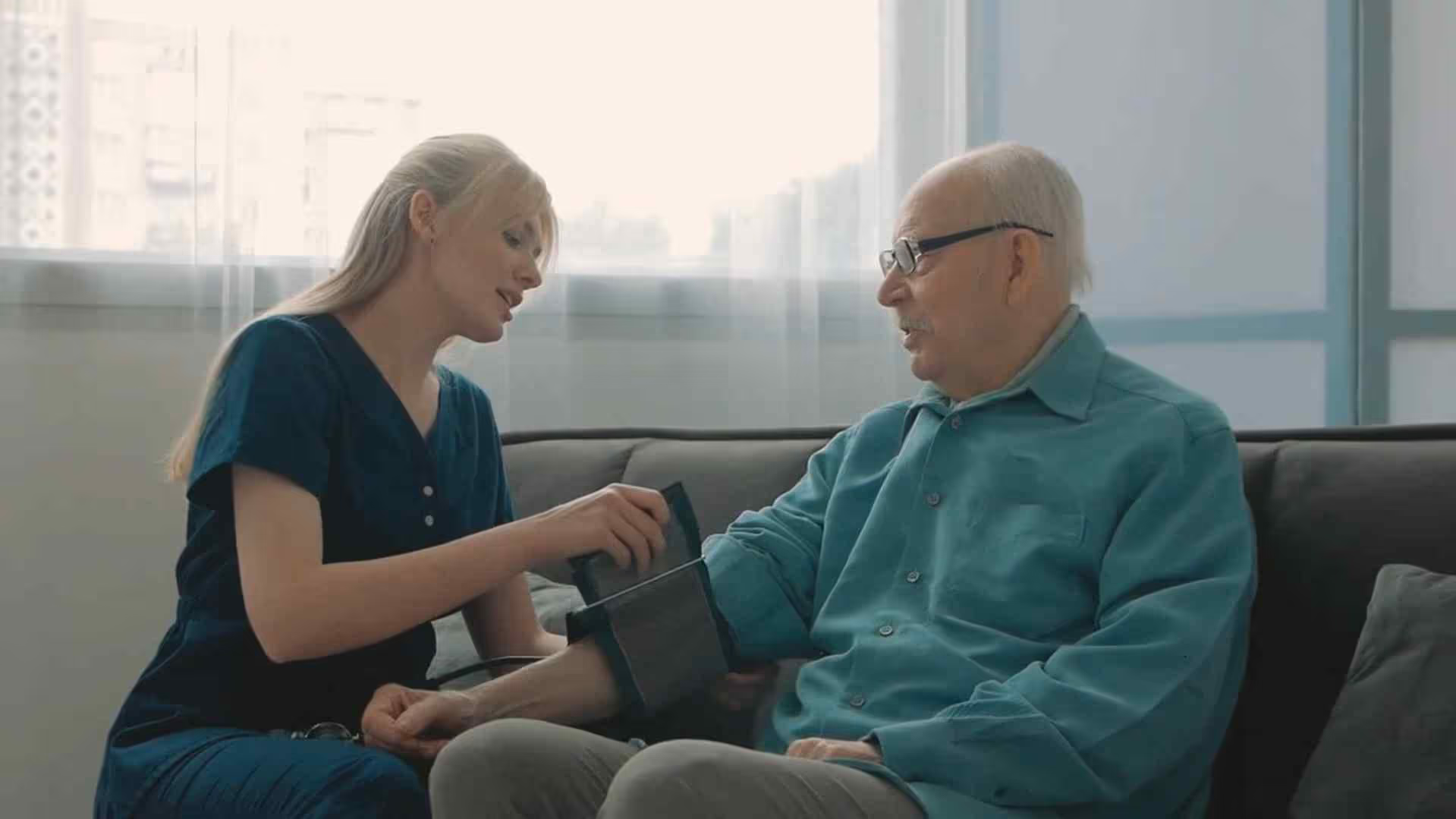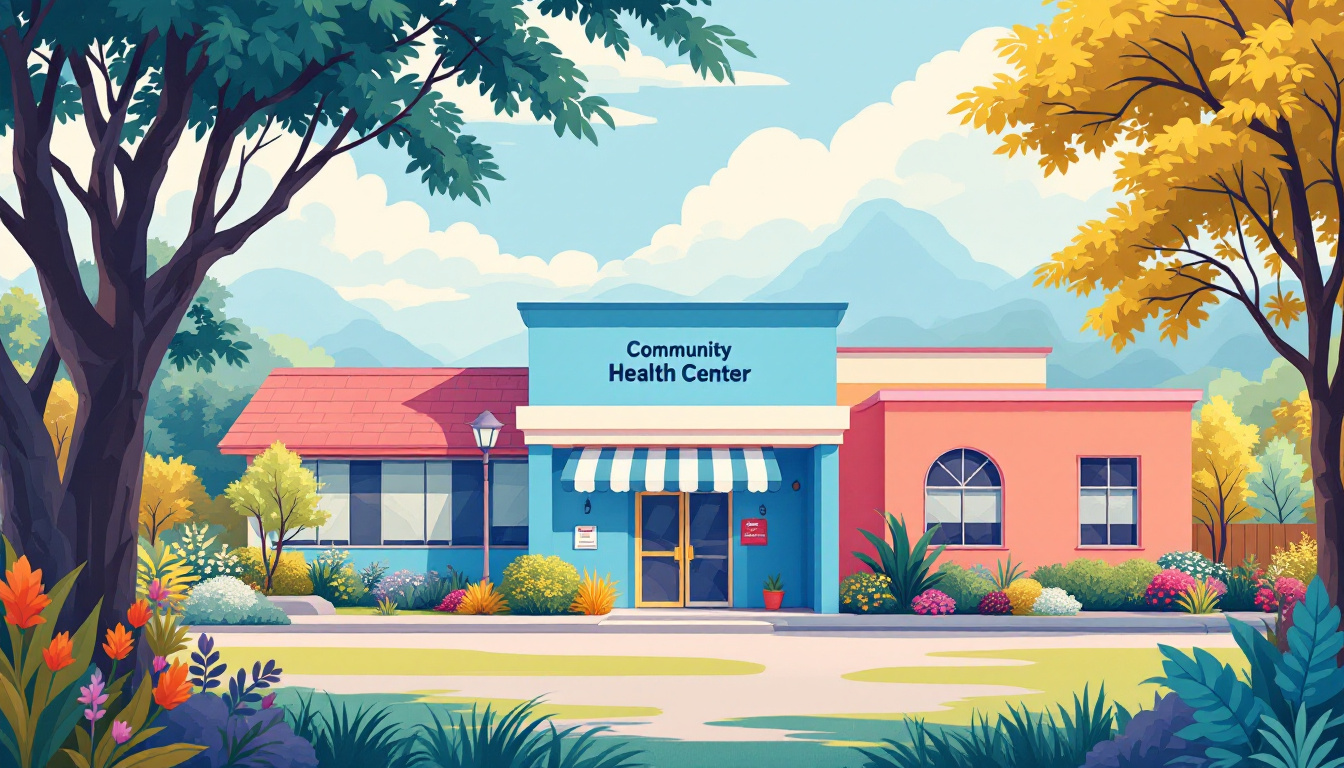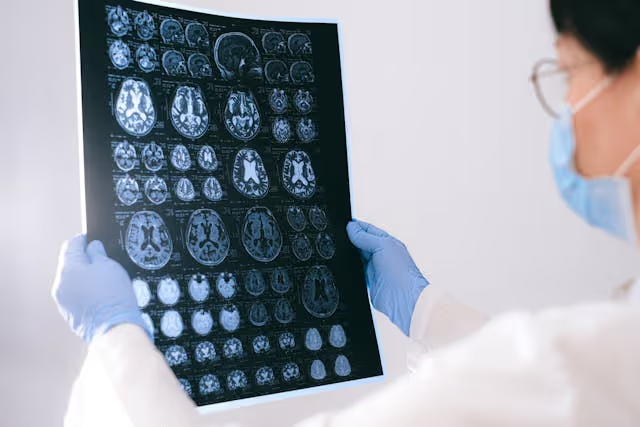How to improve patient-provider communication
April 15, 2025
Enhancing Communication in Healthcare: A Comprehensive Guide


Why Communication Matters in Healthcare
Effective communication between patients and healthcare providers is crucial for ensuring high-quality care and optimal health outcomes. This communication is particularly important for vulnerable populations who may face barriers due to language, literacy, or cultural differences. By understanding the impact of good communication practices and implementing strategies to improve them, healthcare professionals can enhance patient satisfaction, adherence to treatment plans, and overall healthcare delivery.
Building Trust Through Effective Communication

What are some effective patient communication tips?
Effective patient communication is vital for building trust and enhancing treatment outcomes.
Establishing Rapport
Start by establishing rapport through proper greetings and inviting body language. Make a genuine connection with the patient; spending just 1-2 minutes at the beginning of an encounter to engage can vastly improve their perception of the interaction.
Active Listening
Active listening demonstrates that you value the patient's input. Maintain eye contact, show concern through your body language, and avoid interrupting when they speak. Allow them to fully express their thoughts before jumping in with solutions.
Using Open-Ended Questions
Incorporate open-ended questions into your conversations, allowing patients to elaborate on their conditions and experiences. This technique helps create a two-way dialogue and fosters a sense of involvement in their own care, making it easier to gather comprehensive information.
Involving Patients in Decision Making
Finally, involve patients in decision-making processes regarding their treatment options. Discuss various alternatives, listen attentively to their preferences, and encourage shared decision-making to enhance their engagement. Utilize written instructions after discussions to reinforce understanding and confirm shared decision-making, ensuring patients feel respected and empowered in their healthcare journey.
Frameworks for Success: The 7 C's of Communication
What are the 7 C's of communication in healthcare?
The 7 C's of communication in healthcare include:
| C | Description |
|---|---|
| Clear | Use uncomplicated language and avoid jargon to ensure understanding. |
| Concise | Get straight to the point without unnecessary detail, making communication efficient. |
| Concrete | Provide solid facts and examples rather than vague statements, ensuring the message is perceptible. |
| Correct | Ensure that the information is accurate and factual to maintain trust and reliability. |
| Coherent | Keep messages logical and consistent, linking ideas smoothly to enable easy comprehension. |
| Complete | Include all necessary details that patients need to understand their condition and treatment. |
| Courteous | Demonstrate kindness and respect in all interactions to build rapport and trust. |
These principles serve as a framework for effective communication, aiming to reduce misunderstandings and improve clarity in both written and spoken messages. By following the 7 C's, healthcare professionals can enhance their interactions with patients and colleagues, ultimately boosting productivity and fostering better teamwork.
Strategies for Reducing Misunderstandings
Implementing the 7 C's can significantly mitigate the risk of miscommunications in healthcare settings, where patient safety is paramount. For instance:
- active listening involves engaging with patients more effectively by ensuring they feel heard.
- using nonverbal cues such as eye contact can convey empathy.
- tracking shared understanding through the ask-tell-ask method helps reinforce conveyed information.
Improving Clarity in Communication
To further improve clarity, healthcare workers should simplify complex medical jargon and actively work to ensure their messages are understandable. Reinforcing information through teaching methods, such as the teach-back technique, can ensure that patients not only receive the information but also comprehend it thoroughly. This clarity fosters an environment where patients feel comfortable asking questions, ultimately leading to better health outcomes.
Strategies for Enhancing Patient Engagement

How can patient-provider communication be improved?
Effective patient-provider communication is crucial in fostering better health outcomes and ensuring patient satisfaction. To improve this communication, various strategies can be implemented, focusing on patient engagement and understanding.
Patient-Centered Interviewing: This approach emphasizes listening to patients and understanding their concerns, which helps build trust. It involves actively engaging patients by asking open-ended questions and reflecting on their responses, allowing for a deeper understanding of their health needs.
Communication Models: Tools like AIDET (Acknowledge, Introduce, Duration, Explanation, and Thank You) and RESPECT (Rapport, Empathy, Support, Partnership, Explanation, Cultural Competence, Trust) provide structured frameworks for communication that enhance interactions between providers and patients. These models encourage providers to acknowledge patients’ concerns and promote cultural sensitivity, leading to more meaningful exchanges.
Technology Utilization: The integration of technology can significantly foster communication, enabling secure messaging systems and patient portals. These tools allow personalized interactions and facilitate access to health information, thereby enhancing patient engagement. It is essential to ensure that these technologies are user-friendly and respect patient privacy.
Training and Skill Development: Incorporating role-playing or simulation-based training can prepare healthcare professionals to directly address the unique communication challenges they may face. Training should focus on essential soft skills, like active listening and empathy, which are vital for effective dialogue with patients.
Incorporating these strategies can create a more collaborative healthcare environment, enabling shared decision-making and ultimately leading to enhanced treatment adherence and satisfaction.
Educational Tools for Communication

Training for healthcare providers
Training healthcare providers in effective communication strategies is essential for improving patient outcomes. Programs focusing on active listening, empathy, and the clear exchange of information equip providers with the skills they need to engage effectively with patients. By enhancing these soft skills through regular training, providers can meet the diverse communication needs of their patients, ultimately fostering a more patient-centered approach in care.
Role of 5 C's model
One such educational tool is the 5 C's model, which standardizes communication. This model encompasses five critical components:
- Contact: Initiating the conversation in a friendly and welcoming manner.
- Communicate: Clearly sharing information, using language that patients can understand.
- Core Question: Identifying and confirming the main concerns or questions the patient has.
- Collaborate: Involving the patient in their care decisions.
- Close the Loop: Reviewing and reiterating key information to ensure understanding.
Benefits of standardizing communication
Standardizing communication through models like the 5 C's leads to numerous benefits including improved patient engagement and satisfaction. With clearer expectations and a structured approach, patients feel more empowered to participate in their healthcare journey, thus enhancing the overall quality of care and reducing the risk of medical errors. Moreover, consistent communication practices contribute to a more cohesive and efficient healthcare environment.
Exploring Models of Patient-Provider Communication
What are the models of patient-provider communication?
The models of patient-provider communication, as proposed by Emanuel and Emanuel (1992), include:
| Model | Description | Patient Role |
|---|---|---|
| Paternalistic | The provider makes decisions for the patient, assuming they know what is best for the patient. | Passive recipient of care |
| Informative | Focuses on providing patients with all necessary information to make their own decisions. | Active participant, empowered |
| Interpretive | Strives to understand the patient's values and preferences, guiding them in alignment with their needs. | Collaborative decision-maker |
| Deliberative | Engages in dialogue with patients, encouraging reflection on their values while allowing for autonomy. | Active collaborator in health choices |
Each model presents a different approach to communication in healthcare. The Paternalistic Model emphasizes provider control, while the Informative Model shifts toward patient autonomy. The Interpretive Model emphasizes values understanding, and the Deliberative Model encourages discussion about health-related values with shared decision-making.
How are communication models adapting with technology?
Recent advancements in technology have begun reshaping these models of communication. With the rise of AI and eHealth technologies, patient autonomy is significantly enhanced. Access to information enables patients to engage more actively in their care, creating a dynamic shift in traditional models. However, this evolution raises concerns surrounding transparency, social biases, and informed consent. As communication tools become more integrated into healthcare, revisiting these models becomes crucial.
How does communication empower patients?
Empowering patients through effective communication fosters engagement in their healthcare journeys. In contemporary practice, effective information exchange becomes essential for facilitating shared decision-making. Patients feeling supported and informed are more likely to participate meaningfully in their care, promoting positive health outcomes. Incorporating patient perspectives into the care process can lead to more tailored treatment plans that resonate with their values and health goals.
Overcoming Barriers to Communication in Healthcare

Addressing language and literacy barriers
Patients with communication impairments often face significant hurdles in healthcare settings, particularly due to language and literacy barriers. Conducting systematic assessments of communication needs, including literacy checks, is essential. This process ensures that healthcare providers can tailor their communication strategies to meet the unique needs of each patient.
Role of interpreters
The deployment of professional interpretation services is crucial in mitigating miscommunication. Unfortunately, the reliance on ad hoc interpreters can lead to inaccuracies in conveying important health information. Healthcare organizations should prioritize hiring qualified interpreters and invest in formal communication strategies that ensure all patients can effectively communicate their needs and understand their treatment plans.
Cultural competence
Cultural competence plays a vital role in effective patient-provider communication. Clinicians should strive to understand and respect their patients' cultural beliefs and biases. This involves training healthcare professionals in culturally sensitive communication methods, ensuring that care is personalized and respectful, thereby enhancing patient engagement and trust in the healthcare system.
The Role of Technology in Enhancing Communication
How Can EHealth Technologies Improve Communication?
EHealth technologies play a significant role in bridging communication gaps between patients and providers. These tools facilitate faster and clearer information exchange, making it easier for patients to participate in their health management. By enabling remote consultations and providing patients access to their health records, EHealth solutions empower patients to engage actively in their care decisions.
What Are the Benefits of Patient Portals and Secure Messaging?
Patient portals and secure messaging platforms allow healthcare providers to communicate directly with patients, offering a seamless way to share important information and updates. They can send appointment reminders, medication alerts, and tailored health education materials, ensuring that patients remain informed and engaged. This reduces administrative burdens on healthcare staff and enhances patient adherence to treatment plans.
How Does Automating Patient Engagement Help?
Automating patient engagement through technology can significantly improve communication. For instance, automated follow-up reminders can increase adherence to treatment plans, especially when patients often forget post-appointment instructions. Moreover, these automated tools help clarify health issues by simplifying complex information, ultimately enhancing patient understanding and satisfaction.
| Area | Technology | Benefits |
|---|---|---|
| EHealth Technologies | Remote consultations | Enhanced engagement and informed decision-making |
| Patient Portals | Secure messaging | Direct, efficient communication and reminders |
| Automating Patient Engagement | Follow-up reminders | Improved adherence and understanding of health issues |
Training Programs: Enhancing Communication Skills
Role-playing and simulation-based training
Training programs for healthcare professionals often include role-playing and simulation-based exercises. These methods help providers practice real-world scenarios that require effective communication skills. By acting out patient-provider interactions, clinicians learn to recognize nonverbal cues, respond empathetically, and practice clear explanations of medical information. This hands-on approach allows healthcare professionals to build confidence and competence in their communication methods.
Impact on empathy and satisfaction
Studies show that communication training significantly enhances healthcare providers’ empathic abilities. When clinicians are trained to actively listen and respond to patient concerns, it results in increased patient satisfaction. Patients feel valued and understood, which fosters trust in their healthcare providers. The emotional connection established during these interactions leads to better outcomes as patients are more engaged in their care.
Measuring communication competencies
Evaluating communication competencies is crucial in training programs. Various assessment tools and patient feedback surveys can measure improvements in communication skills. Tracking these competencies helps healthcare institutions identify areas for further training and reinforces the importance of ongoing education. As communication skills improve, so do patient engagement levels, adherence to treatment plans, and overall satisfaction.
Impact of Communication on Health Outcomes

Improved adherence and satisfaction
Effective communication between patients and healthcare providers greatly enhances adherence to treatment plans. When patients fully understand their diagnoses and treatment options, they are more likely to follow through with recommendations. High levels of patient satisfaction are closely linked to the perception of being heard and valued during consultations, fostering trust and loyalty towards their healthcare providers.
Reduction of medical errors
Poor communication contributes to approximately 80% of medical errors. By employing clear and concise communication strategies, misunderstandings can be minimized. Techniques such as the ask-tell-ask method ensure mutual understanding, which is crucial in reducing adverse health outcomes stemming from miscommunication.
Empowerment and emotional support
Good communication practices empower patients to engage in their healthcare decisions. This active participation not only improves their confidence but also provides emotional support, helping them navigate the stress associated with medical conditions. Effective communication lays the groundwork for shared decision-making, which further enhances patient involvement in managing their health.
The Path Forward in Healthcare Communication
Improving patient-provider communication is a critical component of modern healthcare. By adopting effective communication strategies, training healthcare providers, utilizing technological advancements, and addressing communication barriers, we can create a more responsive and patient-centered care environment. This not only enhances the quality of care provided but also empowers patients to play an active role in managing their health, leading to better outcomes and a more collaborative healthcare experience. As we continue to evolve these practices, the focus remains on bridging gaps and fostering trust between patients and their care providers.
References
- Improving Patient-Provider Communication: A Call to Action - PMC
- Patient Communication: Practical Strategies for Better Interactions
- Quick Safety 29: Advancing patient-provider communication and ...
- Effective Patient Physician Communication - ACOG
- 6 Ways to Enhance Patient-Provider Communication
- Strategies to Improve Clinician-Patient Communication Experiences ...
- Strategies for Effective Communication in Health Care
- 6 Ways to Improve Patient Communication - Capsa Healthcare



































































.jpeg)











































































































































































































.avif)























































.jpeg)

































































.jpeg)














.jpg)









































.jpeg)









































































.avif)




.avif)

















































.avif)








































































































































































